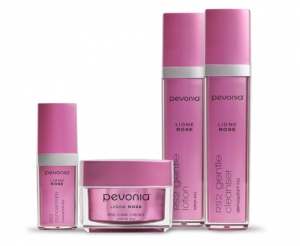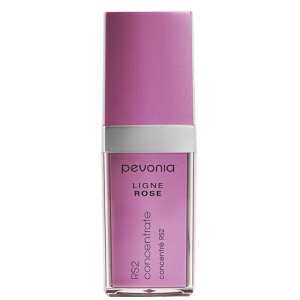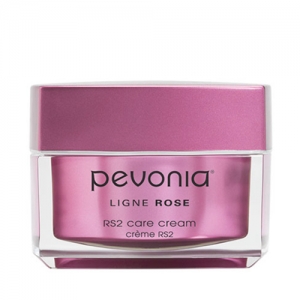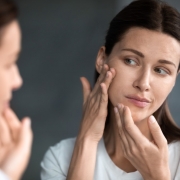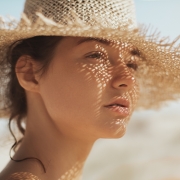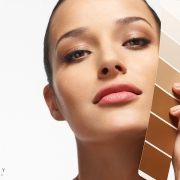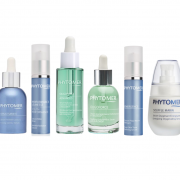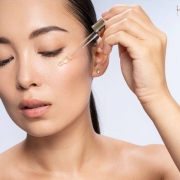Are you suffering from facial redness? Understanding rosacea and how to combat it
If you didn’t already know, you do now – the month of April has become globally renowned as “Rosacea Awareness month” and for very good reason! Yes, an entire month dedicated to educating us all about one of the most prevalent skin disorders. A condition that so many of us don’t understand, even those who may be currently living with it but ignorantly unaware! In fact, it’s said that an estimated 415 million people suffer from rosacea globally. Huge right?
So if you suffer from facial redness, persistent bumps and pimples, skin irritation or thickening read on as we reveal the facts about rosacea and how to best treat it.
So what exactly is rosacea?
Rosacea is an auto-inflammatory skin condition. A chronic condition, which unfortunately cannot be cured per se but can be alleviated.
What are the key signs of rosacea?
If you are suffering from rosacea, they’ll be a few key symptoms to look out for. The most common visible symptom being persistent facial redness which may resemble a blush or sunburn which doesn’t want to go away!
Many people with rosacea have a history of frequent blushing or flushing. This may be accompanied by a sense of heat, warmth or burning that comes and goes, and is often an early feature of the disorder.
Small red solid bumps or pus-filled pimples may often develop. While these may resemble acne, blackheads are absent and burning or stinging may occur.
In many people with rosacea, prominent small blood vessels called telangiectasia become visible on the cheeks, nasal bridge and other areas of the central face.
And finally, but a much less common symptom – your skin may thicken and enlarge from excess tissue, most commonly on the nose (known as rhinophyma).
Through understanding the different appearances of Rosacea, as well as some common triggers, you can start taking steps in the right direction toward controlling your redness.
Who does rosacea affect?
Adults over the age of 30 are more likely to be affected, although rosacea occasionally occurs in young people but very rarely in children.
Pregnancy and childbirth can exacerbate the condition as well as be a trigger.
Like many conditions, rosacea can be hereditary and while it’s more common in women, men tend to suffer from more severe symptoms.
What is the cause?
While the cause of rosacea is unknown there are lifestyle and environmental factors which can affect it’s severity from sunlight to weather changes, alcohol, caffeine, smoking and more.
If I have rosacea what can I do to manage/improve it?
Sorry to be the barer of bad news but there is currently no cure for this intrusive skin condition. The good news however is you can effectively manage your symptoms by a combination of lifestyle changes, supplements (if recommended by a dermatologist) and specific skincare products. Phew!
-
Change up your diet
Underlying redness can sometimes be related to a few external factors, and simple changes like adjusting your diet can make all the difference. In the same way, certain skincare ingredients can trigger surface reactions, some foods can inflame and irritate skin from within. These foods tend to have high acidic content and in turn, can regularly produce flushed cheeks and persistent redness. We suggest avoiding triggers such as spicy foods, citrus, tomato and chocolate and instead recommend an ‘anti-inflammatory diet’ which includes lots of green leafy veggies, fish, essential oils and low-glycemic (G.I) fruits including apples, pears, plums and cherries. Be sure to steer clear of watermelon and mangos which are high-glycemic as well as grains, non-organic meats and dairy!
Finally, pre and probiotics are a must and vitamin D supplements can also help.
-
Make lifestyle changes
As well as diet, simple lifestyle changes will become a must.
I’m afraid alcohol is a no no. But everything in moderation right? Hot beverages should become a thing of the past and drinking cold water and plenty of it (especially while exercising) is a necessity. Extreme temperatures (either hot or cold), as well as wind and sun exposure, can massively impact symptoms so be sure to take all into consideration and smoking is not good. Fact.
-
Introduce an effective skincare program specifically targeting your concern
Change up your skincare routine but be sure your products are compatible with your symptoms. Rosacea specific products such as Pevonia’s best-selling RS2 line can help soothe the skin as well as successfully elevating the symptoms.
Firstly, cleansing your skin is imperative but it’s essential to use mild, non-abrasive cleansers and rinse with lukewarm water (not hot that can further trigger the flush). We love Pevonia’s RS2 Gentle Cleanser. Ideal for hypersensitivity, it’s a calming, creamy cleanser which gently removes impurities with soothing, cooling and decongesting allantoin, French rose and chamomile.
After cleansing, use a soothing serum rich in anti-inflammatory ingredients that work deeply to strengthen capillaries, control blotchiness and restore calmness. Try Pevonia’s RS2 Concentrate.
Follow with a nurturing care cream specifically to moisturise sensitive and rosacea prone skin. Rich in licorice root extract (also known as nature’s cortisone) Pevonia’s RS2 Care Cream is soothing like ice on sensitive skin. What’s more for the month of April, if you purchase this best-selling cream you’ll receive the matching cleanser and lotion 50ml for FREE!
Having read the above if you suspect you may have rosacea, start an effective skincare program today and follow these top tips now before the disorder becomes increasingly severe and intrusive on your daily life.


